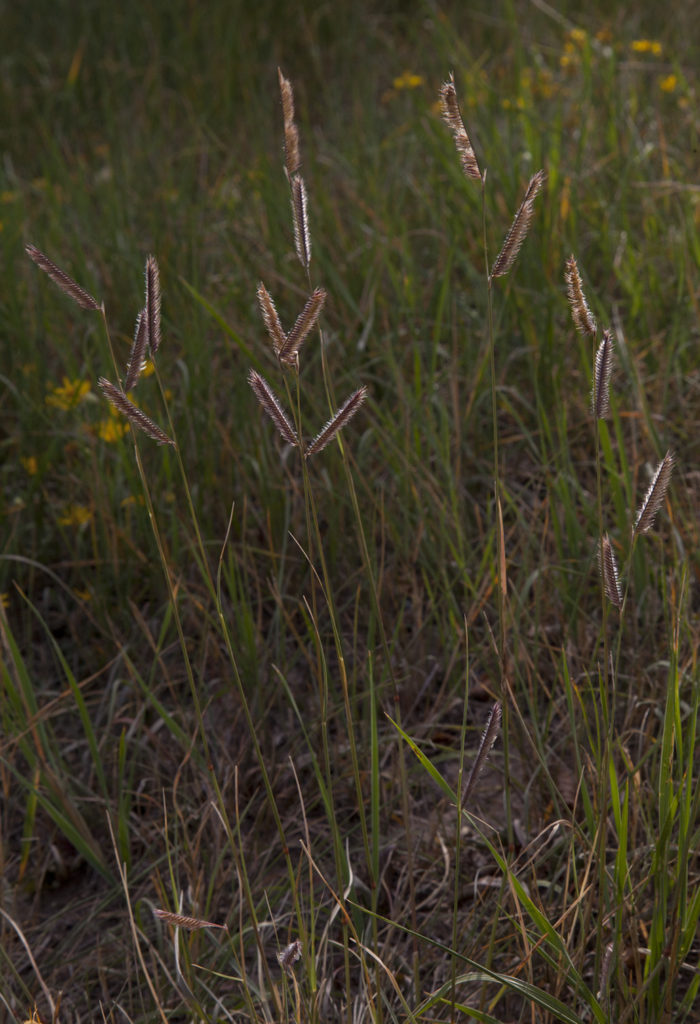 IT’S THE BUSIEST INTERSECTION IN WYOMING, A CROSSING I MAKE, AT some risk of life and limb, nearly every morning on my way back from running my Brittanies. As I wait for the light to change, my gaze settles on the ground at the curb. Heaven only knows how many times this dirt has been turned over as the roads have been built and widened, sidewalks and bike paths laid, Little League fields developed, big box stores and fast-food drive-throughs added. If there was ever any topsoil here, it’s long since been buried or scraped off and moved elsewhere. What’s left is mostly clay with a scattering of gravel, a substrate that is nearly as impervious to living things as the concrete and macadam pavement nearby.
IT’S THE BUSIEST INTERSECTION IN WYOMING, A CROSSING I MAKE, AT some risk of life and limb, nearly every morning on my way back from running my Brittanies. As I wait for the light to change, my gaze settles on the ground at the curb. Heaven only knows how many times this dirt has been turned over as the roads have been built and widened, sidewalks and bike paths laid, Little League fields developed, big box stores and fast-food drive-throughs added. If there was ever any topsoil here, it’s long since been buried or scraped off and moved elsewhere. What’s left is mostly clay with a scattering of gravel, a substrate that is nearly as impervious to living things as the concrete and macadam pavement nearby.
Still, a few plants manage to take root here. Some, like the crested wheatgrass, brome, and fescue, were planted on purpose to hold the ground in place. Others, like the occasional stem of toadflax and sweetclover, are outlanders, tough enough to shoulder their way into the bare spots where other plants can’t survive. And right next to the curb, a tiny holdover from what once was— a patch of blue grama and buffalograss claiming a square yard among the exotics.
How these natives have survived the decades of abuse is beyond understanding. But here they are, a reminder of the history of this place, a history that has been otherwise erased.
A few years back, I picked up a copy of John C. Fremont’s journals. Captain Fremont set out from St. Louis in the spring of 1842 with a small detachment to explore the route across the plains to South Pass. According to Fremont’s journal, the group spent the night of July 12 about five miles south of what is now this corner. There was no timber to provide firewood, so they cooked over buffalo chips. The next morning, they headed north and crossed “a small creek in which there was water, and where several herds of buffalo were scattered about among the ravines, which always afford good pasturage.”
The bones of Fremont and his men have long since returned to the dust, along with the buffalo that fed them and the Sioux and Cheyenne that called this corner of the plains home. And here at my feet is the grass that supported them all— “good pasturage,” indeed.
For a moment, the roar of the road fades, and there is nothing but the weight of the sun on my shoulders, and the cool, prairie breeze whispers in my ears, just as it did for them. I find myself looking out over the creek, remembering something I never saw. All of them gone now. But the grass remains. Something important there, if I could just grasp it. The blare of a horn. Light’s green. Time to cross back over . . .
Leave a Reply
You must be logged in to post a comment.